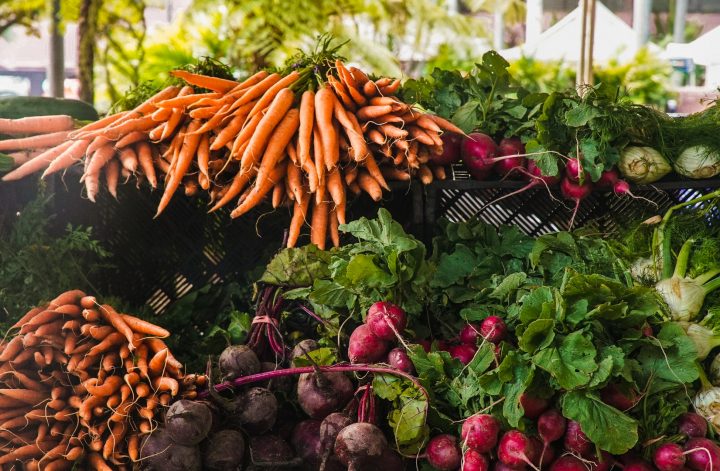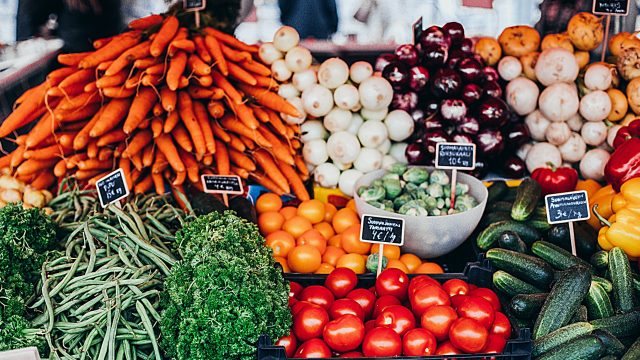It’s a frequent assumption that buying food grown and produced locally will cost more money.
According to Molly Watson, a local food blogger for About.com, “the best way to save money on produce, in general, is to buy it in season, so buying at farmers’ markets is a terrific step in the right direction.”
It takes a different strategy to shop and save at your neighborhood farmers’ market than at the supermarket, but with these pointers, it’s simple to start reaping the rewards of eating locally.
Here are some tips for making financial savings at your neighborhood farmers’ market.
1. Don’t Use That List
You will probably be dissatisfied and spend more than you meant if you go to the market expecting to find a specific item.
Instead, shopper Brittany Haskell advises, “keep your mind open and just see what is available and then design a meal based on what you got.”
Nicole Cormier, a qualified dietitian from the area who enjoys cooking, refers to this method as intuitive cooking. To prevent food waste, it’s crucial to experiment with different ways to prepare veggies.
From Asparagus to Zucchini: A Guide to Cooking Farm-Fresh Seasonal Produce is my go-to cookbook for maximizing what I find at the farmer’s market.
Make the most of any fresh, affordable, and readily accessible produce by using the recipes, cooking advice, and storage suggestions in this helpful book, which includes an alphabetical listing of common vegetables.
2. Purchase seasonal items
A luscious strawberry in the middle of winter is irresistible, but it’s not the healthiest or most economical thing to eat. You are compelled to understand the seasonality of food if you shop locally.
According to EatLocalGrown.com, “Agricultural products are more expensive early or late in the season.”
Farmers put in a lot of effort to be the “first” or “last” to market a specific product. A market’s pricing will decrease if every seller has the same item, but if just one vendor is selling it, that vendor can set the price. Buy things at the height of their season to save money.
Tiffany, a food budget blogger for The Nourishing Home, concurs. Food that is in season and locally grown typically costs less, tastes better, and has more nutrients than produce that is out of season and imported.
She provides two excellent tools to assist you in knowing what to look for at various times of the year: Utilize this useful article from the Natural Resources Defense Council to be aware of the seasons before shopping. It lets you view what is in a season by food, state, and month.
“Locavore is a free app that shows you what’s in season and which local markets provide what you’re looking for. It’s another alternative.”
Yes, there is still more money you can save using your smartphone!
3. Select Seconds
Not all of your cuisine needs to be beautiful or presentable.
Check with the farms about seconds or vegetables they would eat rather than sell to a restaurant, advises Cormier.
The Carson City Farmer’s Market says, “Many farmers also sell seconds – food that is slightly bruised or less substantial than the full-priced goods, but tastes just as excellent or is perfect for canning.”
Your vegetables taste just as well as those of their more attractive counterparts, even if you have to clip off a few bruises.
4. Invest Largely
Additionally, buying in bulk allows the dollars to build up. To successfully purchase in bulk, you must have adequate storage.
Purchasing meats and vegetables in quantity from nearby farmers is an option, according to Cormier, if you have an extra freezer.
A quick check on Craigslist turns up many reasonably priced local chest freezers, and Cormier also advises buying a vacuum sealer.
5. Carry cash, particularly quarters.
EatLocalGrown.com says that quarters are reportedly just as useful at your local farmers’ market as cash.
Paying with quarters frequently results in excellent savings, especially at Sunday markets! Farmers often run out of quarters when giving change, so they are in high demand at farmers’ markets. If you go to a farmer with rolls of quarters, he may give you a tomato, beans, or something else in exchange for using your coins.
Free food simply for possessing a few coins? That is not at all a bad deal.
6. Create connections
Local shopping is no exception to the adage that it all comes down to who you know.
“Establish a relationship with your neighborhood farmers and let them know you’ll buy any food they “need to sell quickly” at a discount. Use it right away or freeze it after that. For bread and muffins, I frequently buy extra zucchini, Erin Chase of $5 Dinners told AllYou.
See if you can swap non-food products for your product if you have established a solid rapport with one or more farmers.
Building a friendship with the vendor is crucial in this situation because they could be less ready to barter with a total stranger.
According to Kelly Thompson and Kasey Trenum of Time 2 Save, “vendors frequently are willing to engage in traditional bartering.”
Try exchanging your stockpile’s contents, such as toiletries, paper products, and cleaning supplies, for fresh produce.
7. Travel in any weather.
Farmers’ markets are frequently open, rain or shine, because the season is so short.
ValPak.com advises that you may typically get excellent deals when the weather is poor.
Customers are turned away by rain, cold, and even extreme heat. Therefore the farmer may give discounts to increase sales. Fewer clients also give you more time to converse with the farmer and establish a rapport.
8. Buy later
Although it can be risky to arrive late, frequent shoppers report that the market’s final 30 minutes are frequently when they locate the finest discounts.
The selection won’t be as good, and stalls might run out of popular items, but Watson notes that merchants frequently prefer to sell what’s left at a slightly discounted price than hauling it home.
“However, don’t presume the farmers have no other use for their products and make a paltry offer. The more likely option is rounding down to the nearest dollar (or $5 increment for bigger sums) or receiving a free item for multiple transactions.
EatLocalGrown.com advises the following wise tactic:
Make sure you voluntarily enter into a mutually beneficial relationship if you regularly arrive at the market just before closing time. Do the farmer a favor and buy a lot of food if you get a good bargain from them before they close. Say something like, “I see that you have some leftover food, and I want to assist you. What do you have to offer me for $20?
The farmer will be more likely to give you a decent deal and the best items on their table if you initially provide a certain amount of money and let them choose what to sell you.
9. Think about joining a CSA
CSA, or community-supported agriculture, is another excellent way to increase the number of local vegetables in your diet.
By signing up for a CSA, you consent to pay a farmer a “share” of the season’s harvest and pick up fresh vegetables weekly.
Even while you usually have to pay up in advance, Cormier notes that shares normally cost $30 per week and come with an abundance of fresh food.
When I belonged to a CSA a few years ago, I bought a half share for the season, saved a tonne of money, and had extra vegetables. Find a farmers market close to you using our directory to start shopping locally.
Writer, designer, and director of marketing Ally Piper. She enjoys eating and cooking regional cuisine and blogs on balance, business, and life.



